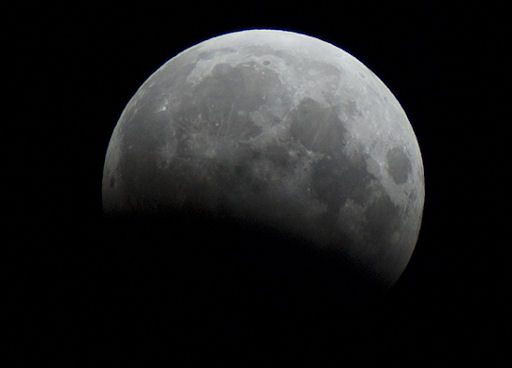THE MYSTERIOUS ARC OF VENUS: Astronomers hope to glimpse a "ring of fire" around Venus during its historic transit across the sun on June 5-6. The apparition, if it is seen, could help crack some of the deepest mysteries of the second planet. Get the full story from Science@NASA.
LUNAR ECLIPSE: This morning, June 4th, the Moon glided through the shadow of Earth, producing a 38% lunar eclipse visible across the Pacific from east Asia to North America. Coyote songs filled the air outside Borrego Springs, California, when Dennis Mammana took this picture of the full Moon cut almost in half:

"The desert night air was cool, the moonlight glorious and the coyotes were yipping away merrily in the distance. What a great night for an eclipse! This shot of mid-eclipse was captured with a University Optics 80mm refractor telescope and a Nikon D700 digital camera."
Browse the real time photo gallery for more moonshots: